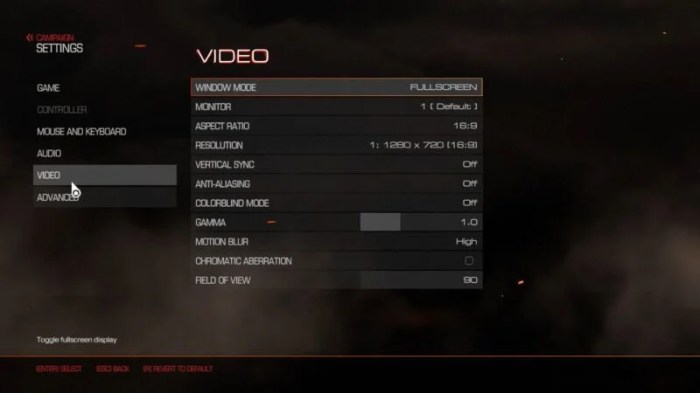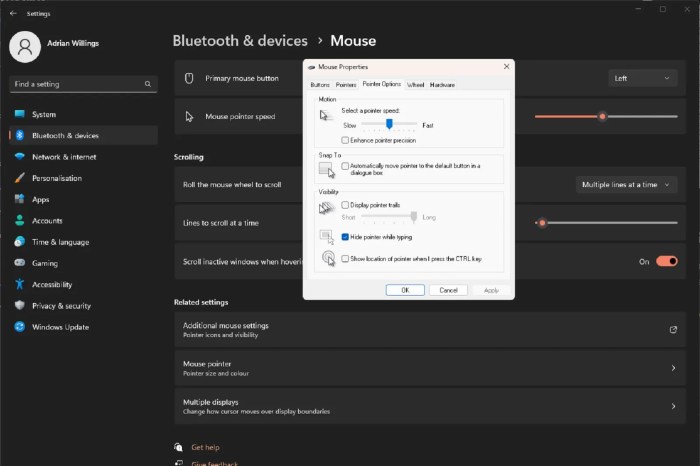Optimize game settings low spec hardware best performance: Unlocking smooth gameplay on budget machines isn’t a myth. This guide dives deep into maximizing your gaming experience, even with older or less powerful hardware. We’ll explore practical techniques to tweak in-game settings, optimize your system, and utilize helpful tools to significantly boost frame rates and overall performance.
Get ready to transform your gaming sessions from frustrating lag fests into enjoyable adventures.
From understanding the limitations of your CPU, GPU, RAM, and storage to mastering in-game graphics settings, this comprehensive guide leaves no stone unturned. We’ll cover everything from adjusting resolution and texture quality to managing background processes and updating drivers. We’ll also explore powerful external tools that can supercharge your performance, and delve into game-specific optimization strategies.
Prepare to conquer lag and experience a dramatic improvement in your gaming experience, regardless of your hardware limitations.
System-Level Optimizations for Enhanced Performance
Game performance isn’t solely determined by your graphics card; your operating system’s efficiency plays a crucial role. By optimizing your system’s resource allocation and eliminating unnecessary processes, you can unlock significant performance gains, even on low-spec hardware. Think of it as decluttering your computer’s brain – the more efficient your system, the faster your games will run.
Closing Unnecessary Background Applications
Background applications consume valuable system resources like RAM and CPU power, directly impacting gaming performance. Imagine your computer as a chef preparing a gourmet meal (your game). If the chef is constantly distracted by other tasks (background apps), the main meal will suffer.
To ensure optimal performance, it’s essential to identify and close applications that aren’t actively needed. This includes social media clients, streaming services, and other resource-intensive programs. A simple task manager overview can reveal these resource hogs, allowing you to prioritize your gaming experience.
The impact is often dramatic; closing even a few unnecessary apps can free up significant resources, leading to smoother gameplay and higher frame rates.
Process Management and Prioritization
Windows manages processes through a task manager, which shows the running applications and their resource consumption. By understanding this, you can actively manage and prioritize processes to allocate resources effectively. For example, you can set the priority of your game to “High” to ensure it receives preferential treatment from the CPU.
This means that when resources are limited, your game will get the lion’s share, resulting in a smoother and more responsive experience. Conversely, you can lower the priority of less critical applications to minimize their impact on your gaming performance.
This isn’t about forcefully shutting down apps, but intelligently managing their resource usage.
Driver Updates for Enhanced Compatibility and Performance
Outdated or corrupted drivers are a common culprit behind poor gaming performance. Drivers are the software that allows your hardware (graphics card, sound card, etc.) to communicate with your operating system. Outdated drivers can lead to compatibility issues, glitches, and reduced performance.
Regularly updating your drivers, especially those for your graphics card, is essential for optimal gaming performance. Manufacturers like NVIDIA and AMD regularly release driver updates that include performance optimizations, bug fixes, and new features. Checking for and installing these updates is a simple yet highly effective way to boost your gaming experience.
Consider using the manufacturer’s website directly for the most reliable updates.
Optimizing Windows Power Settings for Gaming
Windows power settings significantly influence system performance. The default “Balanced” setting often prioritizes power saving over performance. Switching to the “High Performance” setting instructs your system to prioritize performance over battery life (assuming you’re using a desktop). This means your CPU and GPU will operate at their maximum potential, resulting in smoother frame rates and improved responsiveness.
While this will increase energy consumption, it’s a worthwhile trade-off for a significantly enhanced gaming experience, especially when aiming for optimal performance on lower-end hardware. Within the Power Options settings, you can also fine-tune individual power plans to further optimize performance based on your specific needs.
Visual Representation of Performance Improvements: Optimize Game Settings Low Spec Hardware Best Performance

Optimizing your game settings for low-spec hardware can dramatically improve your gaming experience. But seeing is believing. A clear visual representation of these improvements can solidify the impact of the optimizations you’ve implemented. Let’s delve into how to effectively showcase your enhanced performance.The most impactful way to demonstrate performance gains is through a comparative chart.
This allows for a direct, side-by-side comparison of your game’s performance metrics before and after optimization.
Performance Comparison Chart, Optimize game settings low spec hardware best performance
Imagine a bar chart with two distinct sets of bars: “Before Optimization” and “After Optimization.” The X-axis represents the key performance indicators: Frame Rate (FPS), Loading Time (seconds), and a general Gameplay Smoothness Score (rated 1-10, with 10 being the smoothest).
The Y-axis displays the measured values. For example, “Before Optimization” might show a frame rate of 20 FPS, a loading time of 30 seconds, and a gameplay smoothness score of 4. The corresponding “After Optimization” bars would then showcase the improved metrics – perhaps 60 FPS, 10 seconds loading time, and a smoothness score of 9.
This visual immediately highlights the significant improvements achieved. The difference in bar lengths for each metric provides a clear and compelling illustration of the optimization’s success. This type of chart easily conveys the magnitude of the changes, making the impact of the optimization readily apparent to even the most casual observer.
The visual contrast between the “Before” and “After” states makes the impact undeniably clear.
Epilogue

Optimizing game settings for low-spec hardware is about strategic choices, not settling for subpar gameplay. By carefully adjusting in-game settings, streamlining your system, and utilizing helpful tools, you can significantly improve your gaming experience. Remember, it’s a journey of tweaking and testing to find the perfect balance between visual fidelity and performance.
Don’t let limited hardware hold you back – embrace the optimization process and reclaim your gaming potential. The smooth, lag-free gameplay you crave is within reach.
Question Bank
Can I upgrade my hardware instead of optimizing settings?
Yes, upgrading your hardware, especially your GPU and RAM, will offer the most significant performance boost. However, optimization techniques can significantly improve performance even with existing hardware.
What if my game doesn’t have many graphical settings to adjust?
Some older or simpler games might offer fewer options. Focus on resolution and potentially turning off less impactful features like shadows or anti-aliasing. System-level optimizations will still be beneficial.
Are there any risks associated with using third-party optimization tools?
Always download tools from reputable sources. Some tools might have unintended consequences or be resource-intensive themselves. Research carefully before using any third-party software.
My game still lags after optimization. What should I do?
Try further reducing graphical settings, closing more background applications, or consider if your hardware is truly capable of running the game smoothly. You may need to consider a lower resolution or a different game altogether.
Leave a Reply